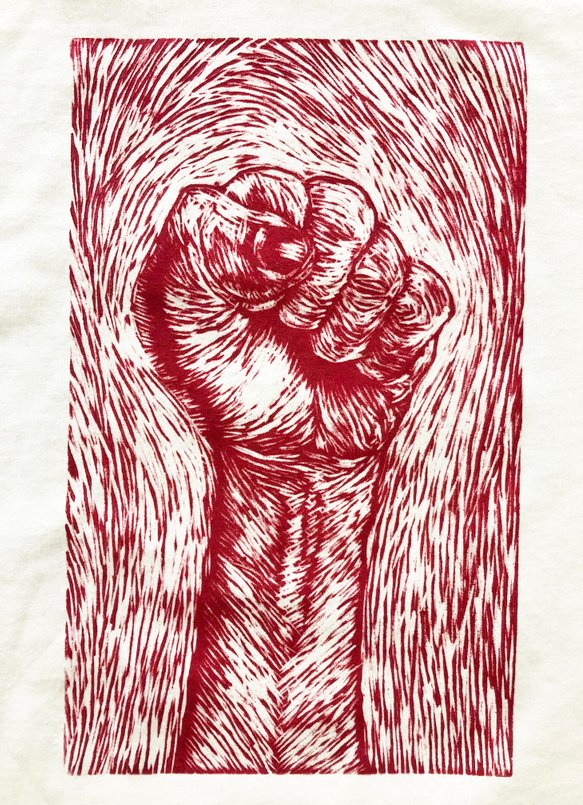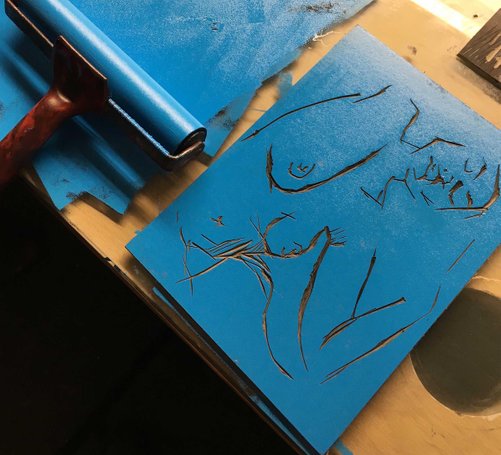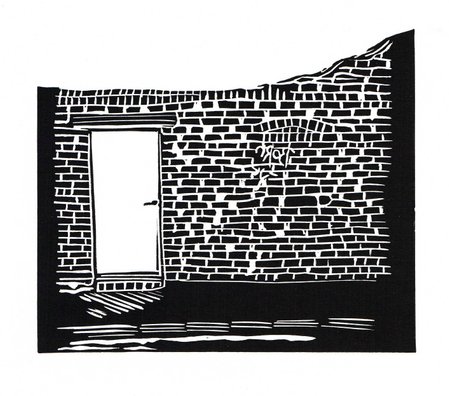The linocut print technique involves carving a printing block, using a piece of linoleum. Sharp tools of varying sizes are used to cut lines, shapes and marks into the block. The parts that are left after carving are raised, creating a relief,hence the term 'relief print'.
The block is then inked up using a roller, and the print is taken onto paper using either a press or printing by hand. Lino printing also works well on fabric.
Something to remember when carving the block, is that the image will print in reverse. For example, with text, the words have to be carved backwards, as though they were a mirror image. There are some tips and tricks that can be learnt to help with this.
The cuts made in the lino block can be simple, singular lines, they can form linear patterns, or they can be used in an erratic way, such as in this artwork by Nick Christie.
Lino cut can be used as a medium for drawing, using a carved line. Relief printing ink is used, which comes in a wide range of colours, and can be mixed just like paint.
This artwork was created by student Leah Coxon, while preparing her printmaking portfolio for university. Leah was accepted into the Glasgow School of Art to study painting and printmaking, and is currently studying at Leeds University.
Cait Heaney produced a body of work (above and below) using linocut, while studying to complete her BA Honours in Fine Art at Newcastle University.
Depicting scenes from her student life, she later created a zine using from the original prints, using the screen print technique.











